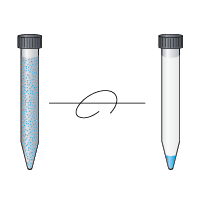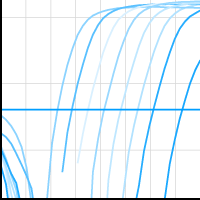Retro-X Concentrator provides a fast, simple, and highly efficient method for concentrating any retroviral stock. You simply mix your retroviral supernatant with the Retro-X Concentrator reagent, incubate overnight, and spin the mixture in a standard centrifuge (Figure 1). You'll increase your vector titer by up to 100-fold and obtain excellent recoveries—without ultracentrifugation. Retro-X Concentrator works for all retroviral supernatants and pseudotypes, including those made from Takara Bio's Retro-X vectors. The procedure can be easily scaled up or down to suit your needs.

Figure 1. The Retro-X Concentrator protocol. Add Retro-X Concentrator reagent to clarified viral supernatant, incubate overnight at 4°C, and spin.










